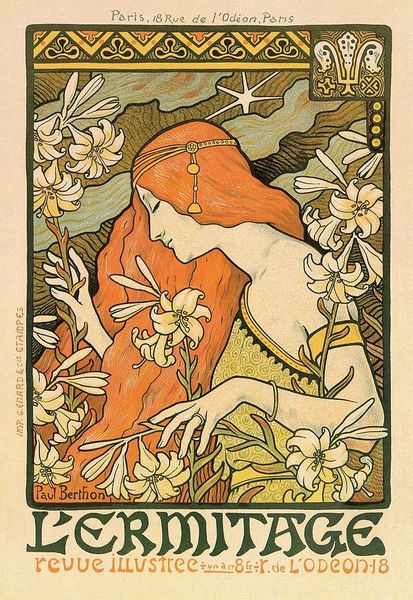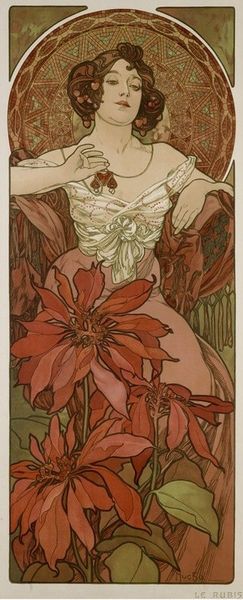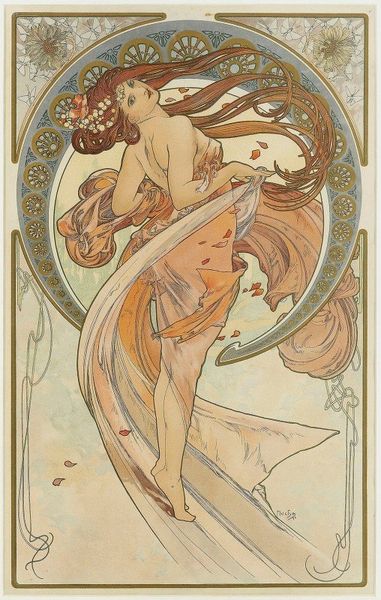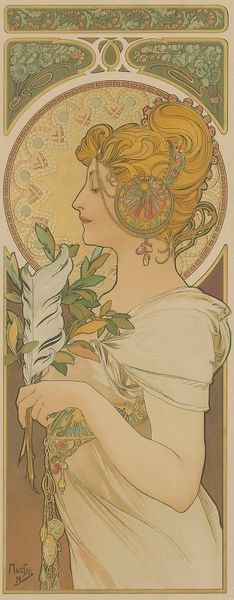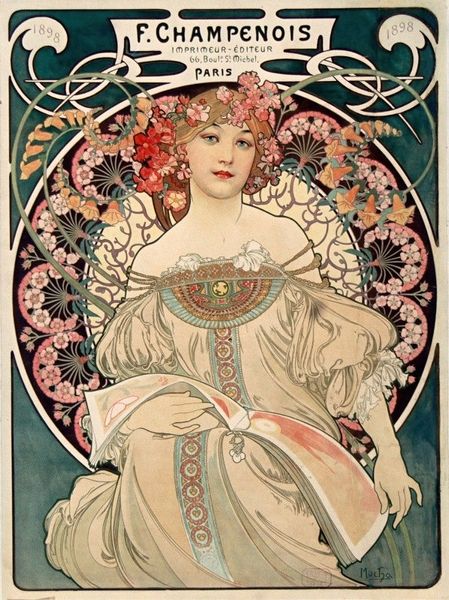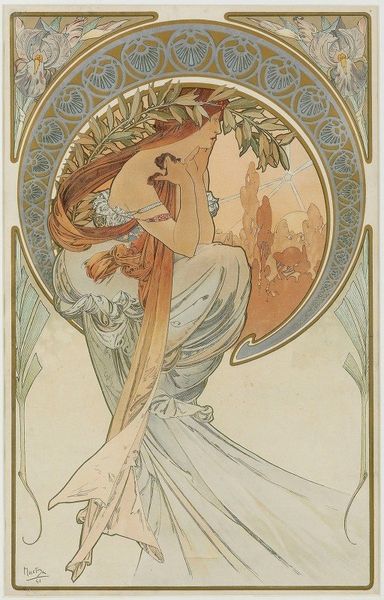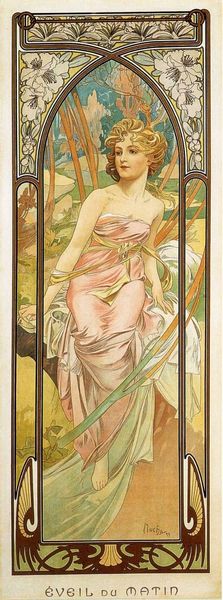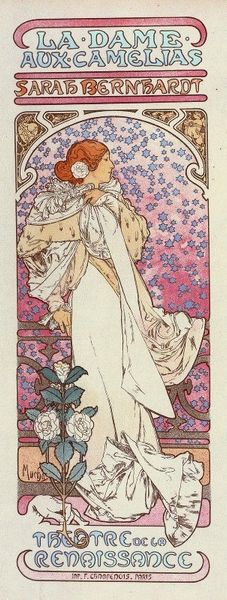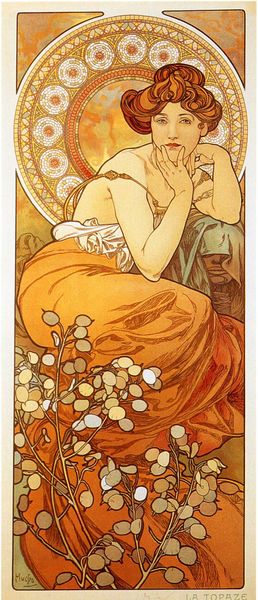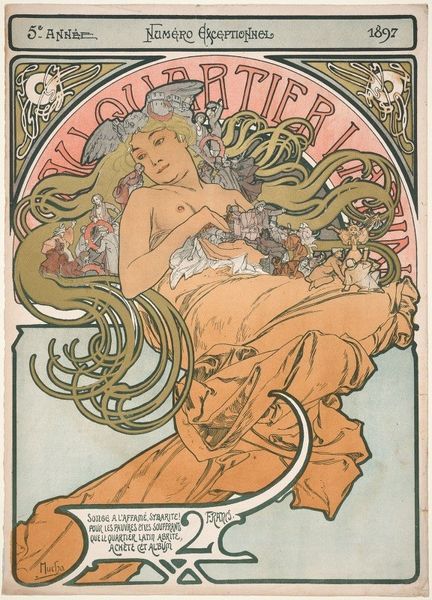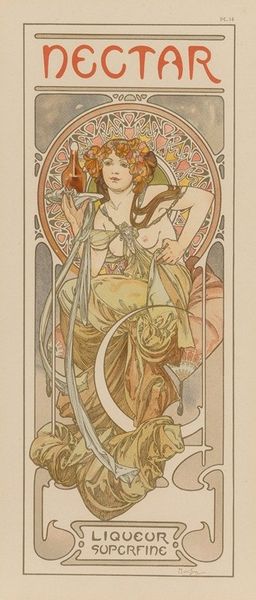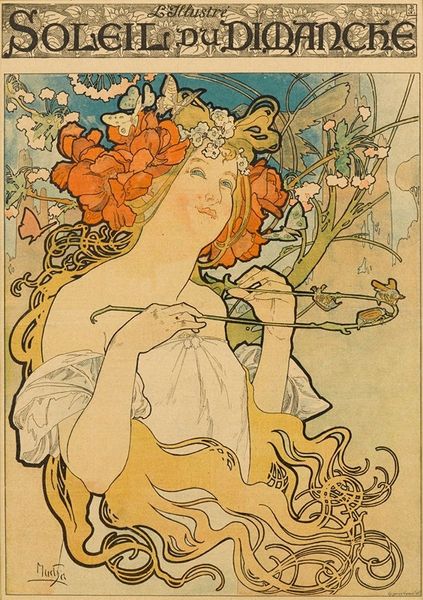
drawing, poster
#
portrait
#
drawing
#
art-nouveau
#
caricature
#
symbolism
#
portrait drawing
#
poster
#
portrait art
Copyright: Public domain
Editor: This is Teodor Axentowicz's poster for the "2nd Exhibition of the Society of Polish Artists Sztuka," created in 1898. The portrait is rendered with strong outlines and bold colors—it makes me think of art nouveau aesthetics. What visual elements stand out to you the most in this drawing? Curator: Notice how the artist plays with the flatness of the picture plane. There's very little modeling of form; instead, we have blocks of color delineated by firm contours. Observe, too, how the flowing lines of her hair and the stylized floral wreath contribute to the overall sense of decorative rhythm. Do you perceive any intentional discord in the work's composition? Editor: The direct gaze of the woman feels a bit at odds with the flowy art nouveau elements, and the bold 'A' symbol at the top clashes with the gentleness of the portrait. It creates an odd tension. Is that what you mean by discord? Curator: Precisely. Consider the function of the stark outlines and the unmodulated colour fields. It’s not merely decorative, is it? It suggests a move toward simplification and abstraction, emphasizing the symbolic and communicative function of the poster over realistic representation. Can we understand it, therefore, in terms of the formal experimentation taking place at the turn of the century? Editor: I hadn't thought of it that way. I was stuck on the style, but it makes sense that he would be pushing boundaries by juxtaposing seemingly disparate elements like abstraction with naturalistic representation of the subject. Curator: Indeed. It allows us to appreciate the poster as not simply a decorative advertisement, but as a formal statement about the possibilities of visual language. Editor: This formal analysis approach helped me appreciate this piece more than I would have otherwise! Thanks!
Comments
No comments
Be the first to comment and join the conversation on the ultimate creative platform.
